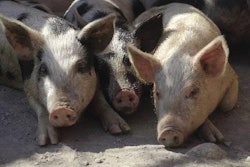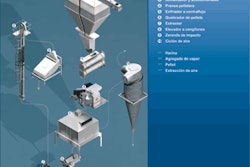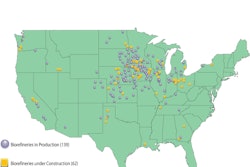Higher grain prices on the world market can be expected to continue for the foreseeable future, suggests the fourth annual Agricultural Outlook paper published jointly by the 30-country Organisation for Economic Co-operation and Development (OECD) and the Food and Agriculture Organisation of the United Nations (FAO). Looking at the period 2008 to 2017, they predict world meat production will grow on average by 2% per year, although there will be marked differences in growth rates from one region to another. Meat consumption in developing countries (especially those of the Asia-Pacific area) will account for more than 80% of global growth.
But the report available at www.fao.org and www.oecd.org acknowledges uncertainties in trying to formulate a forecast. It says this year's Outlook has been prepared in an environment characterised by increased instability in financial markets, higher food price inflation, signs of weakening global economic growth and food-security concerns. Five key assumptions related to biofuel use of grains and oilseeds, petroleum prices, income growth in major developing economies, crop yields and the exchange rate of the US dollar relative to the currencies of all other countries.
Developing countries are expected to dominate production of many agricultural items by 2017. Brazil could hold a 30% share of total world meat exports by the end of the projections. It will figure alongside a small number of major exporters including the USA, Canada, Argentina and Australia as dominant forces in world markets. By contrast, the export share of the European Union is predicted to fall throughout the review period.
Import dependency in meat products should grow in many developing countries as rising demand surpasses the domestic capacity for meat production. Among the developed countries, Russia looks set to remain ahead of Japan as the world's largest net meat importer by 2017. Worldwide, the changing factors behind supply and demand are forecast to result in commodity prices during the period 2008-2017 being substantially higher than in the last 10 years. Beef and pork prices are forecast some 20% higher, with the price of wheat and maize likely higher by 40-60%.
But the report available at www.fao.org and www.oecd.org acknowledges uncertainties in trying to formulate a forecast. It says this year's Outlook has been prepared in an environment characterised by increased instability in financial markets, higher food price inflation, signs of weakening global economic growth and food-security concerns. Five key assumptions related to biofuel use of grains and oilseeds, petroleum prices, income growth in major developing economies, crop yields and the exchange rate of the US dollar relative to the currencies of all other countries.
Developing countries are expected to dominate production of many agricultural items by 2017. Brazil could hold a 30% share of total world meat exports by the end of the projections. It will figure alongside a small number of major exporters including the USA, Canada, Argentina and Australia as dominant forces in world markets. By contrast, the export share of the European Union is predicted to fall throughout the review period.
Import dependency in meat products should grow in many developing countries as rising demand surpasses the domestic capacity for meat production. Among the developed countries, Russia looks set to remain ahead of Japan as the world's largest net meat importer by 2017. Worldwide, the changing factors behind supply and demand are forecast to result in commodity prices during the period 2008-2017 being substantially higher than in the last 10 years. Beef and pork prices are forecast some 20% higher, with the price of wheat and maize likely higher by 40-60%.

















